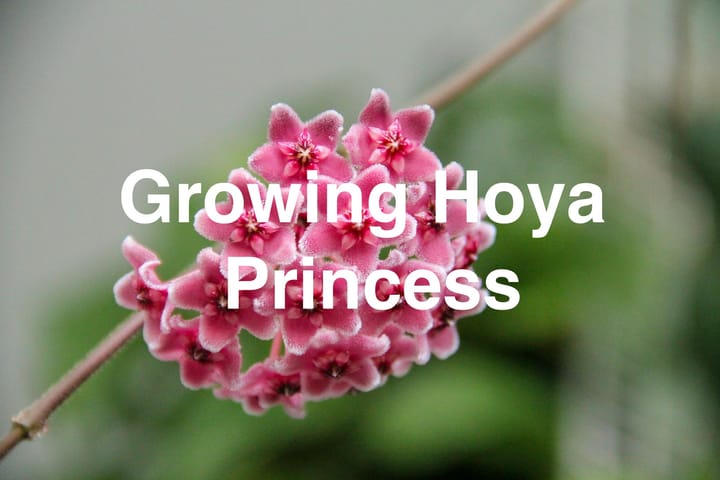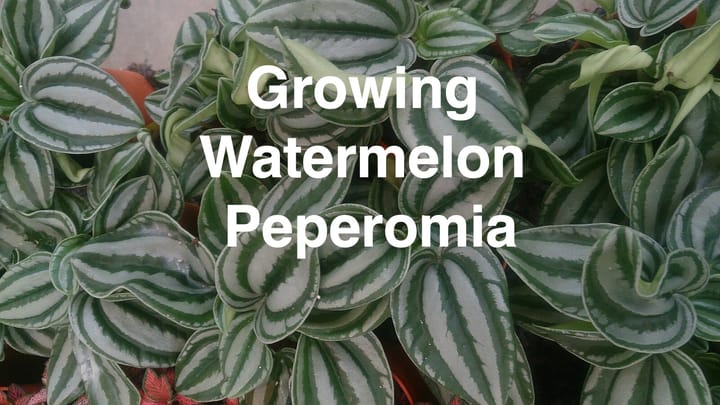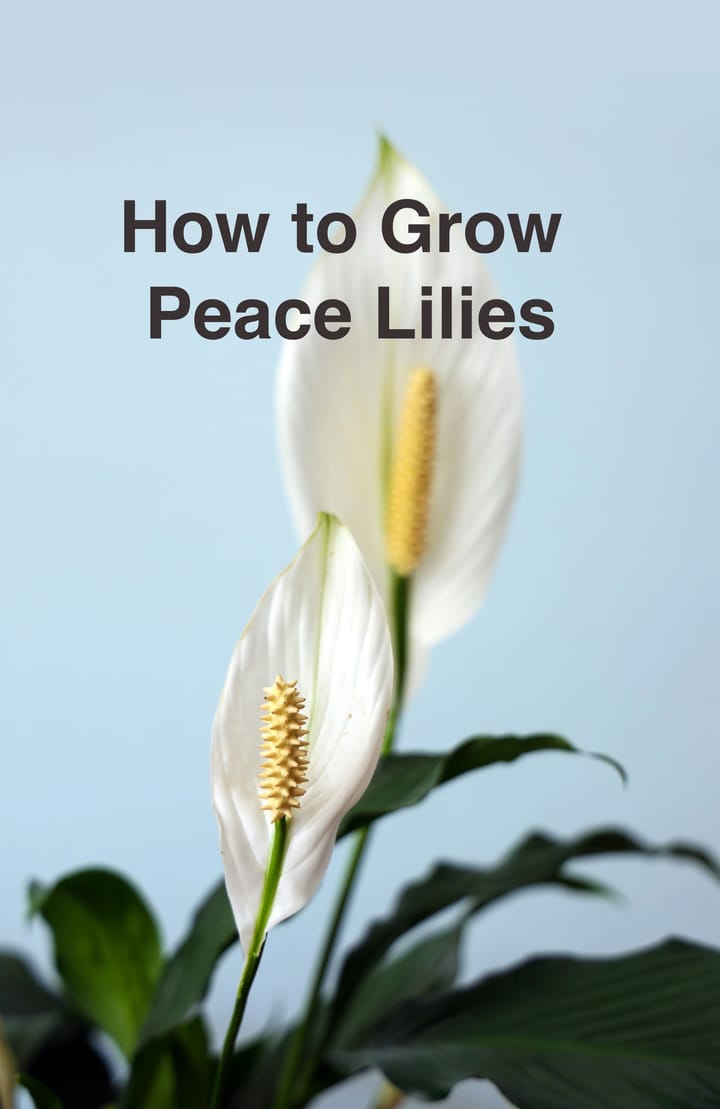How to Grow Chinese Money Plant
The Chinese Money Plant is a popular houseplant with round, glossy leaves. Its botanical name, Pilea peperomioides, suggests its peppery, round-leafed appearance.
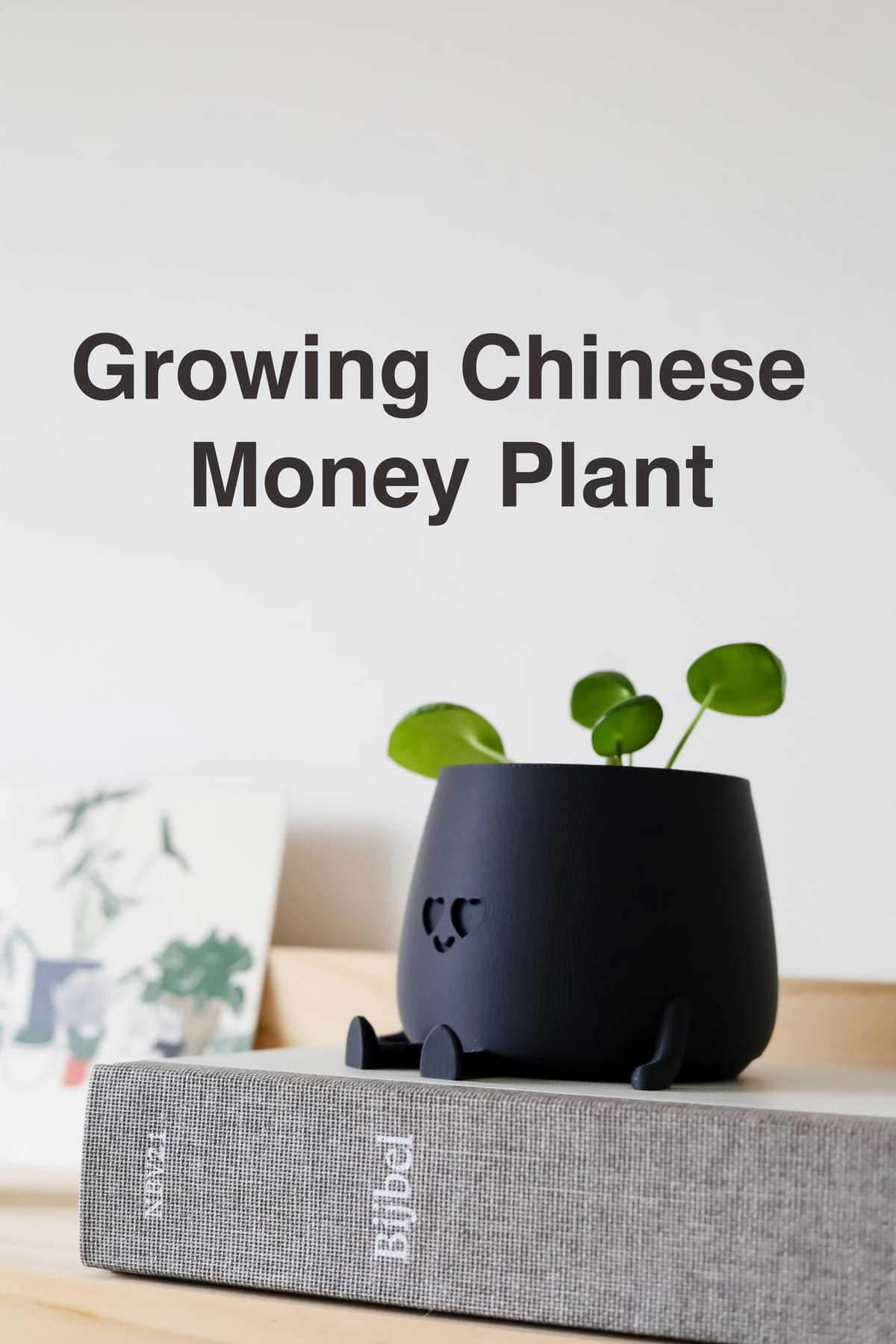
Originally from the southern Yunnan province of China, this plant has a rich history and has been domesticated across the world for its unique charm and supposed ability to attract money.
To grow a Chinese Money Plant successfully, having the right environment is key. It thrives in bright, indirect light, and appreciates well-draining soil with a pH between 6.0 and 7.0 to avoid root rot.
When it comes to watering, Pilea peperomioides prefers to dry out slightly between waterings. Its love for a somewhat humid environment and consistent temperatures ranging from 60°F to 75°F (15° - 23°C) will keep your plant steady and healthy.
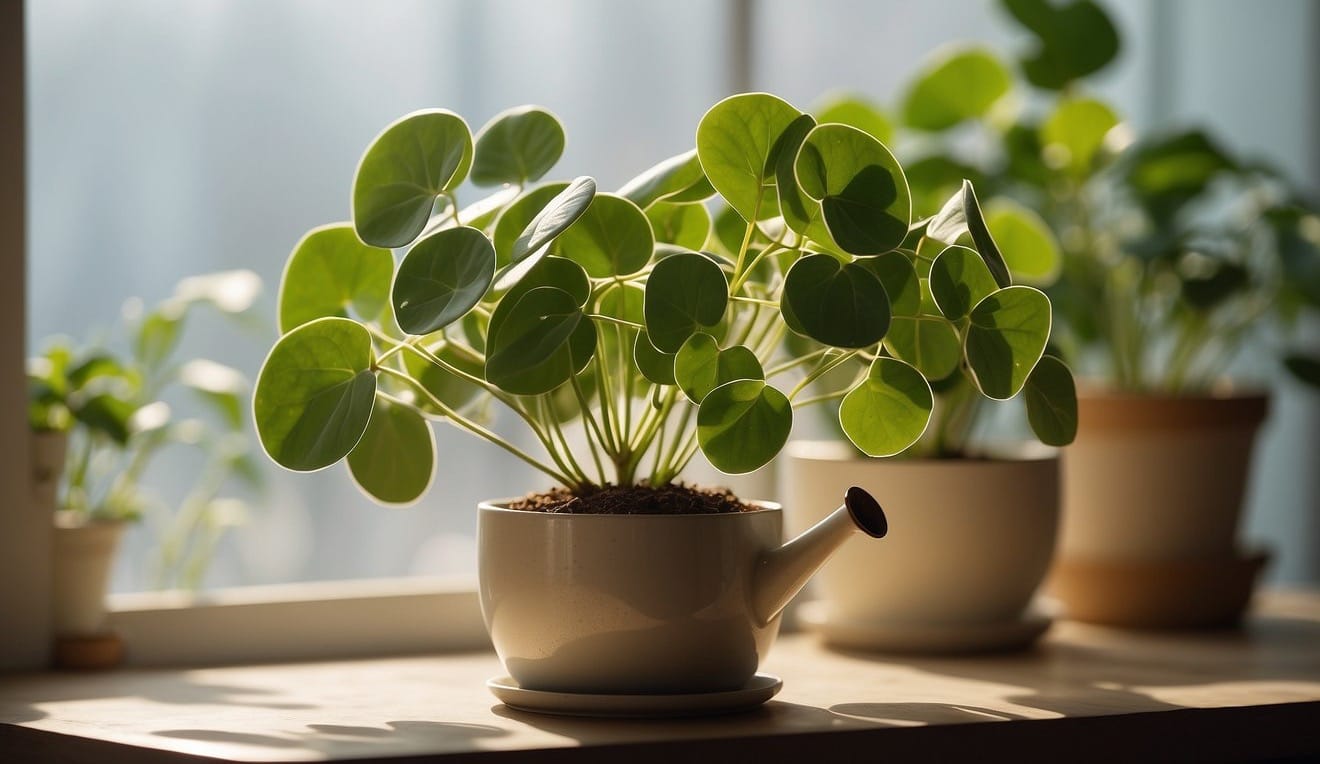
Key Takeaways
- Provide your Chinese Money Plant with bright, indirect sunlight and well-draining soil.
- Allow soil to dry slightly between waterings and maintain indoor temperatures between 60°F and 75°F (15° - 23°C).
- Propagate and repot as needed to encourage growth and maintain plant health.
Getting Started with Your Chinese Money Plant
To ensure the health and growth of your Chinese Money Plant, start by selecting the right pot and soil. These foundational elements are crucial for proper water management and root development.
Choosing the Right Pot
When selecting a pot for your Chinese Money Plant (Pilea peperomioides), drainage is a paramount feature. Your container should have at least one drainage hole at the bottom to prevent water accumulation and the potential for root rot.
Terracotta pots are an excellent choice as they are porous and allow soil to dry more evenly. For starting a plant, a pot size of 5 to 6 inches in diameter will suffice, as it provides enough space for growth without being overly large, which can lead to overwatering.
Selecting Appropriate Soil
Your Chinese Money Plant will thrive in well-draining soil. A high-quality potting mix should be used, which typically contains a blend of peat or coconut coir and pine bark.
Adding perlite to the mix will improve the drainage further, reducing the risk of waterlogged soil. Aim for a soil pH between 6.0 and 7.0, which is slightly acidic to neutral. This mimics the plant’s natural habitat and promotes healthy growth.
Making sure the soil is not only nutritious but also well-aerated will facilitate robust root health, key for the plant's overall vitality.
Ideal Growing Conditions

To ensure your Chinese Money Plant thrives, it's crucial to replicate its native habitat by providing optimal light and maintaining the right temperature and humidity levels.
Light Requirements
Your Chinese Money Plant prefers bright indirect light and can tolerate some direct sunlight, but too much can scorch its leaves.
Place it in a spot where it can receive gentle morning sun or dappled light throughout the day. Avoid harsh afternoon sun. If you only have low-light conditions available, Pilea peperomioides can adapt but its growth may be slower.
- Best Light Conditions: Bright, indirect sunlight
- To Avoid: Prolonged exposure to direct afternoon sun
Temperature and Humidity
Pilea peperomioides enjoys a stable environment with temperatures ranging between 60°F and 75°F (15°C - 23°C).
It's important to shield your plant from drastic temperature changes which can occur during summer or winter near drafty windows or air conditioning vents.
As for humidity, aim for a moderate to high level. If your indoor air is dry, especially in winter, consider using a humidifier to prevent the leaves from drying out.
- Ideal Temperature Range: 60°F - 75°F (15°C - 23°C)
- Humidity Preference: Moderate to high humidity
Watering and Feeding Your Plant

Maintaining proper watering and feeding routines is vital for the robust growth of your Chinese Money Plant. Adhering to a consistent schedule can prevent common issues and ensure healthy development.
Watering Schedule
Your Pilea peperomioides prefers to dry out slightly between watering sessions. You should:
- Check the top 2 inches of soil for dryness before watering. If it’s dry, it's time to water.
- Water deeply until it runs out of the pot’s drainage holes.
- Be sure to discard any excess water from the saucer to avoid the risk of root rot.
Do not let your plant sit in standing water, as over-watering is a common mistake that can lead to fungal diseases and poor plant health.
Fertilization Techniques
To encourage your Chinese Money Plant's growth, fertilization is an important factor:
- Use a balanced 10-10-10 fertilizer, ideally diluted to half its strength.
- Fertilize once a month during the growing season (April to fall).
- Refrain from fertilizing in the winter months, as the plant goes dormant and will not benefit from the nutrients.
Remember, over-fertilization can harm your plant, so it's essential to follow a restrained approach for best results.
Propagation and Growth
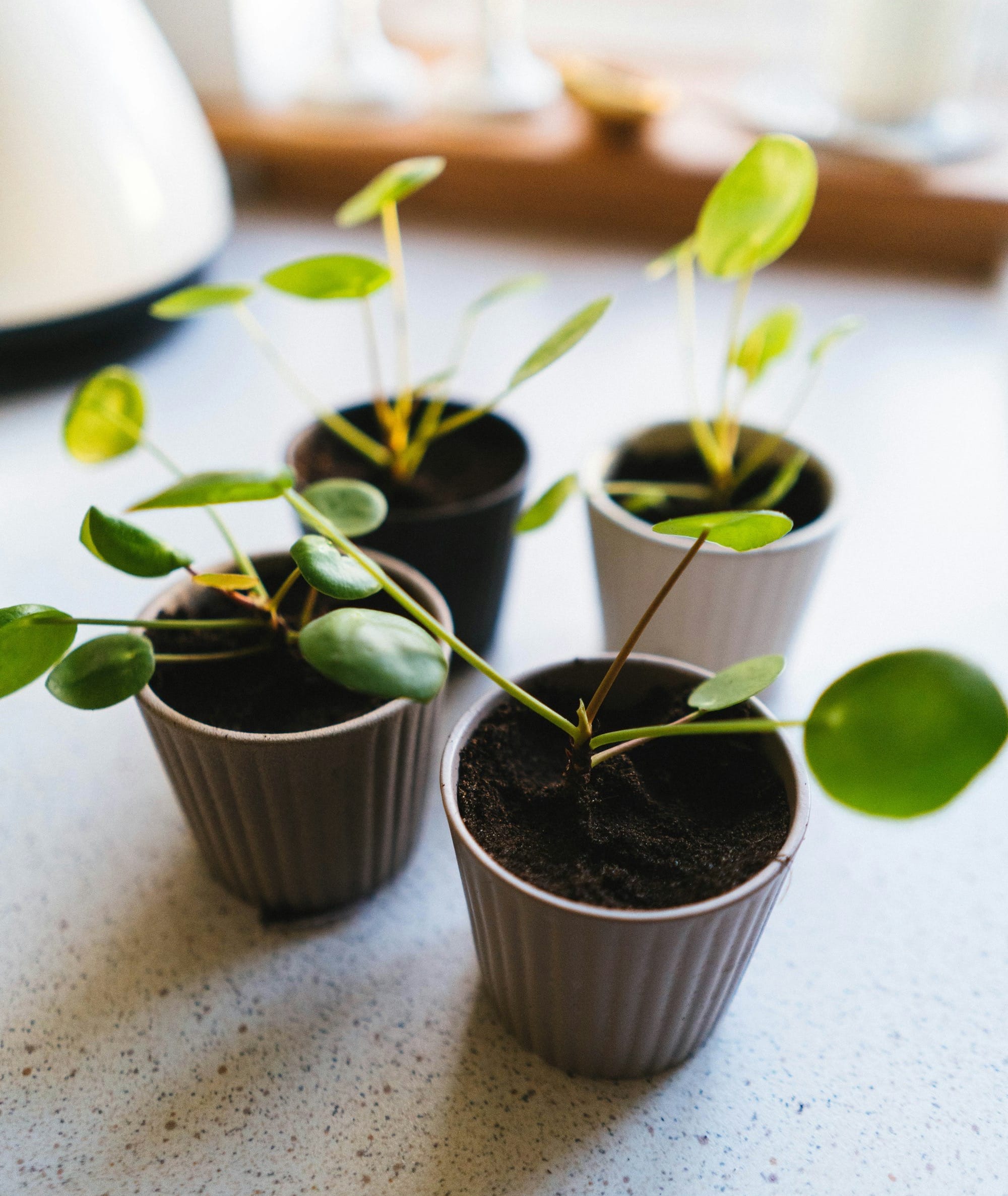
Successfully propagating and understanding the growth of your Chinese Money Plant ensures a thriving houseplant. Here, you'll learn direct methods to propagate and familiarize yourself with its unique growth patterns.
Propagating Chinese Money Plant
To propagate your Chinese Money Plant, look for pups or offsets, which are young plants that grow at the base of the mature plant. Follow these steps:
- Identify a Pup: Find a healthy pup already sprouting leaves.
- Separation: Gently remove the pup from the mother plant. If attached by a rhizome, use a clean knife to sever it.
- Soil Preparation: Prepare a pot with well-draining soil mixed with perlite for increased drainage.
- Planting: Place the pup in the pot and ensure contact with the soil.
- Watering: Keep the soil moist, avoiding waterlogging to prevent rot.
- Care: Position your new plant in indirect sunlight and keep an eye on moisture levels.
Understanding Growth Patterns
Your Chinese Money Plant will show steady growth with proper care. The growth rate is influenced by factors such as light, water, and soil quality.
- Light: Provide bright, indirect light for optimal growth.
- Water: Water when the top inch of soil is dry. Overwatering can lead to root rot.
- Soil: Use a peat-based or coir-based mix with a pH between 6.0-7.0.
By monitoring these conditions, you'll encourage a healthy Chinese Money Plant that graces your space with its distinctive coin-shaped leaves.
Plant Health and Maintenance
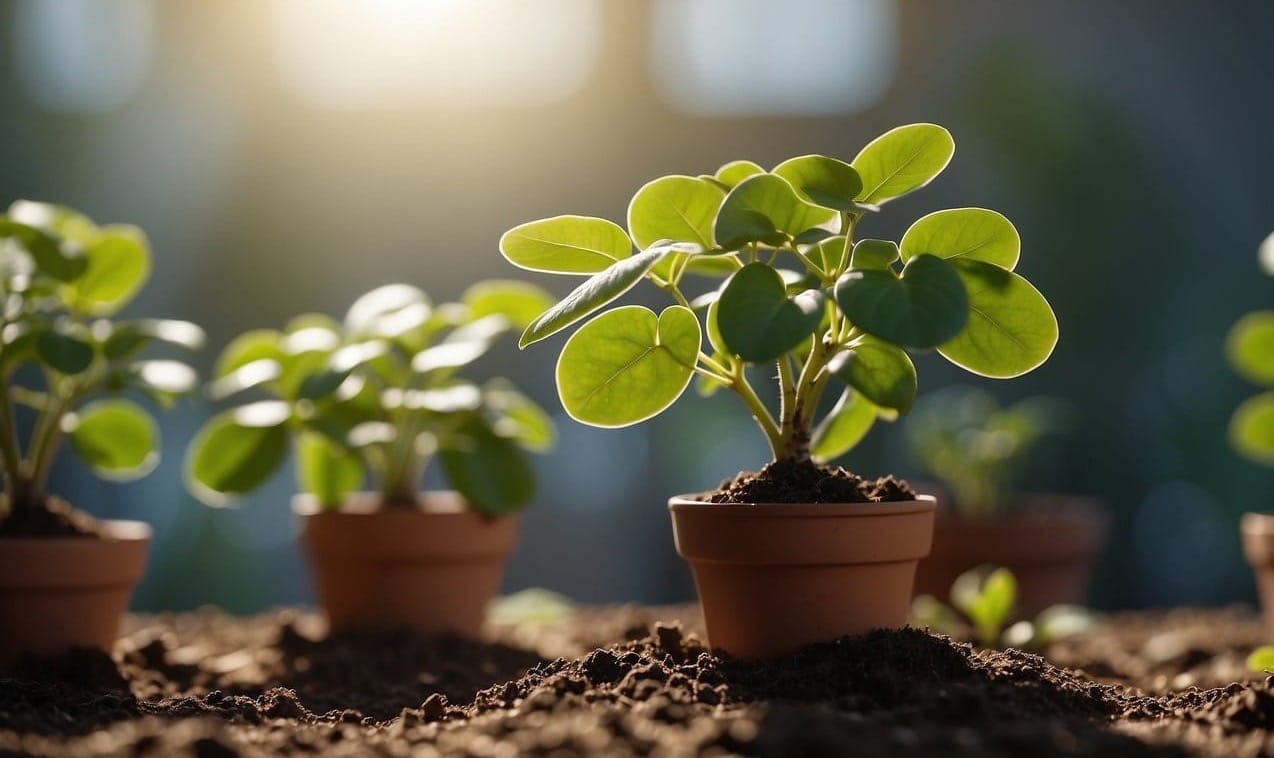
Maintaining the health of your Chinese Money Plant (Pilea peperomioides) is key to ensuring a lush, vibrant growth. Proper care includes regular pruning to maintain its shape and size, and vigilance against common pests and diseases to prevent them from causing damage.
Pruning Techniques
When to Prune: Schedule regular pruning to remove dead or yellowing leaves to encourage new growth. The best time to prune is in the spring or summer, during the plant's active growth phase.
How to Prune:
- Inspect your plant regularly to identify any leaves that need removal.
- Use clean, sharp pruning shears.
- Cut the leaves at the base but avoid cutting the main stem.
Tip: Pruning is also an opportunity to propagate new plants by taking healthy cuttings.
Managing Common Pests and Diseases
Pests to Watch For: Your plant can become a host to pests such as spider mites, mealybugs, scale, and fungus gnats.
Disease Prevention: Over-watering can lead to root rot, a common issue that can be prevented with proper watering practices.
Ensure the topsoil is dry before watering again, and use pots with drainage holes to avoid standing water.
Pest and Disease Management:
| Pest/Disease | Symptoms | Management Strategies |
|---|---|---|
| Fungus Gnats | Tiny black flies around soil | Allow soil to dry out, use sticky traps |
| Aphids | Sticky residue on leaves | Wash off with water or use insecticidal soap |
| Mealybugs | White cottony substance | Apply alcohol with a cotton swab |
| Scale | Bumps on stems and leaves | Remove by hand or treat with horticultural oil |
| Spider Mites | Fine webs, discolored leaves | Increase humidity and clean leaves, use miticides |
| Root Rot | Yellowing, wilting leaves | Improve drainage, let soil dry, repot with fresh soil |
Note: Early detection is crucial for managing pests and diseases effectively.
Regularly check the undersides of leaves and around the stem base for early signs of infestation or disease.
Repotting and Long-Term Care
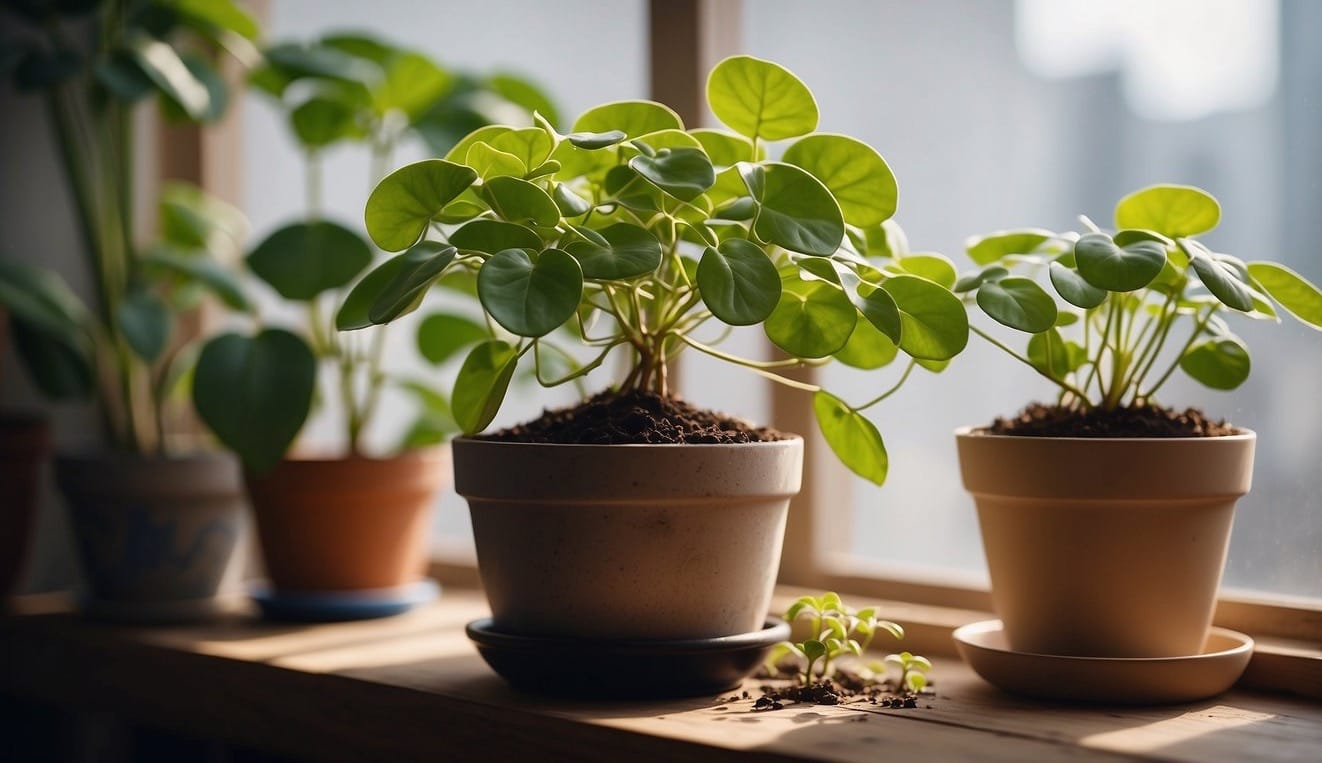
To ensure the health and vibrancy of your Chinese Money Plant, understanding the intricacies of repotting and continuous care is essential.
This segment focuses on the optimal timing and techniques for repotting, as well as key practices to sustain the longevity of your plant.
When and How to Repot
Frequency: Repot your Chinese Money Plant every two years, or when you notice the roots have filled the pot.
The best time to repot is during spring or early summer, which aligns with the active growth period of the plant.
Steps:
- Select a new pot that is approximately 2 inches larger in diameter than the current one.
- Prepare a fresh soil mixture of peat-based or coir-based potting mix, and consider adding perlite to improve drainage.
- Soil pH should be between 6.0-7.0.
- Carefully remove the plant from the existing pot, ensuring you disturb the root system as little as possible.
- Trim any dead or rotting roots to prevent potential root rot.
- Place the plant in the new pot and fill with soil, pressing down gently to eliminate air gaps.
- Water thoroughly after repotting.
Ensuring Longevity of the Plant
To maintain the lush foliage and robust growth of your Chinese Money Plant:
- Watering: Keep the soil lightly moist during growth seasons (spring and summer). In winter, allow the topsoil to dry out slightly more between waterings.
- Light: Provide bright, indirect sunlight to prevent the leaves from fading.
- Soil: A well-draining soil mix is vital to prevent root rot. Refresh the top layer of soil annually to replenish nutrients.
- Mature Plants: As the plant matures, rotate it occasionally to ensure even growth on all sides.
Chinese Money Plant Varieties and Cultivars
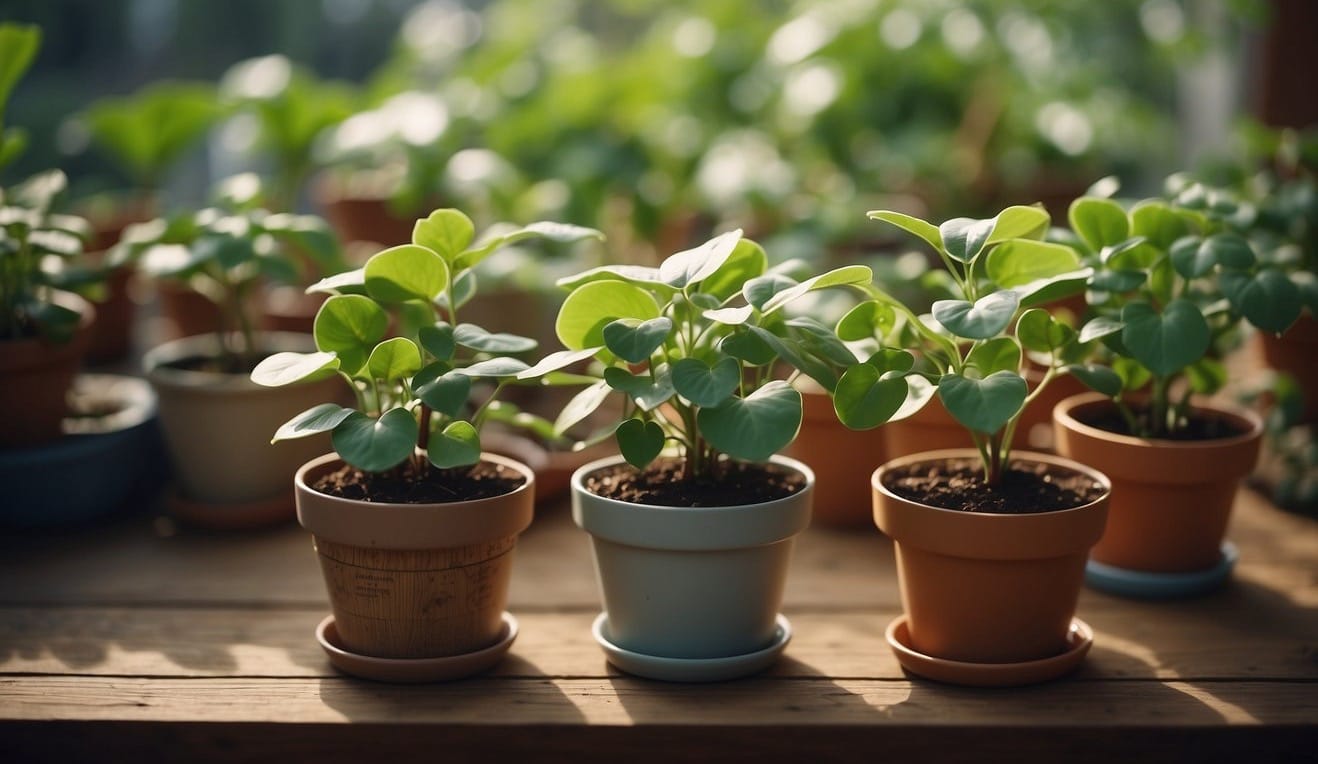
The Chinese Money Plant, also known as the Pilea peperomioides, boasts a striking array of cultivars that can enhance the aesthetics of your indoor garden. Below is an organized list of known varieties and their distinctive features:
Popular Varieties
- UFO Plant: The common name for Pilea peperomioides, due to its round, saucer-like leaves.
- Missionary Plant / Friendship Plant: Reflects the plant's tendency to be shared among friends because of the ease with which it can be propagated.
Distinctive Cultivars
- Pilea peperomioides 'Mojito': This cultivar is noted for its unique variegation pattern. Leaves are mottled with shades of green reminiscent of the muddled mint in a Mojito cocktail.
Each cultivar retains the characteristic round, coin-shaped leaves, which is why Pilea peperomioides is also referred to as the Coin Plant.
When cultivating these cultivars, remember that their care requirements mirror that of the standard Chinese Money Plant: they favor well-draining soil, light but indirect sunlight, and moderate watering that allows the soil to slightly dry out between sessions.
Frequently Asked Questions
Before diving into these topics, it's important for you to understand that specific care and propagation methods can greatly affect the health and appearance of your Chinese Money Plant.
What is the ideal soil mix for a Chinese Money Plant?
Your Chinese Money Plant thrives in rich, well-draining soil. A mix of peat-based or coir-based soil with added perlite is ideal to facilitate drainage and avoid waterlogging. The soil pH should remain between 6.0 and 7.0 for optimal growth.
How do you propagate a Chinese Money Plant effectively?
Propagation is best done through offshoots that grow from the base of the plant.
Gently trace the soil around an offshoot to the base and sever the connecting root with a sharp pair of pruning shears. You can then pot the offshoot in a similar soil mix as the parent plant.
How can I prevent my Chinese Money Plant from dropping leaves?
To prevent leaf drop, ensure you do not overwater the plant.
Let the top 2 inches of soil dry out before deeply watering again. Maintain a consistent watering schedule, and make sure your plant is not exposed to drafts or drastic temperature changes.
What are the best conditions for indoor growth of a Chinese Money Plant?
Indoors, aim for a spot with bright, indirect light and room temperature that does not fluctuate widely. Generally, a range between 60-75°F (16-24°C) is suitable. The plant prefers a bit of humidity, so avoid placing it in overly dry rooms.
How can you encourage a Chinese Money Plant to have a bushier appearance?
Encouraging a bushier appearance involves regular pruning and ensuring adequate light.
Pinch off the growing tips to promote branching and regularly rotate the plant to prevent it from leaning towards the light.
Is it possible to cultivate a Chinese Money Plant in water, and how would one do so?
Yes, you can cultivate a Chinese Money Plant in water through a process called hydroponics. Start by placing a cutting with a node submerged in water, and change the water regularly.
To transition to soil later, gradually introduce the plant to soil mix to avoid shock.
